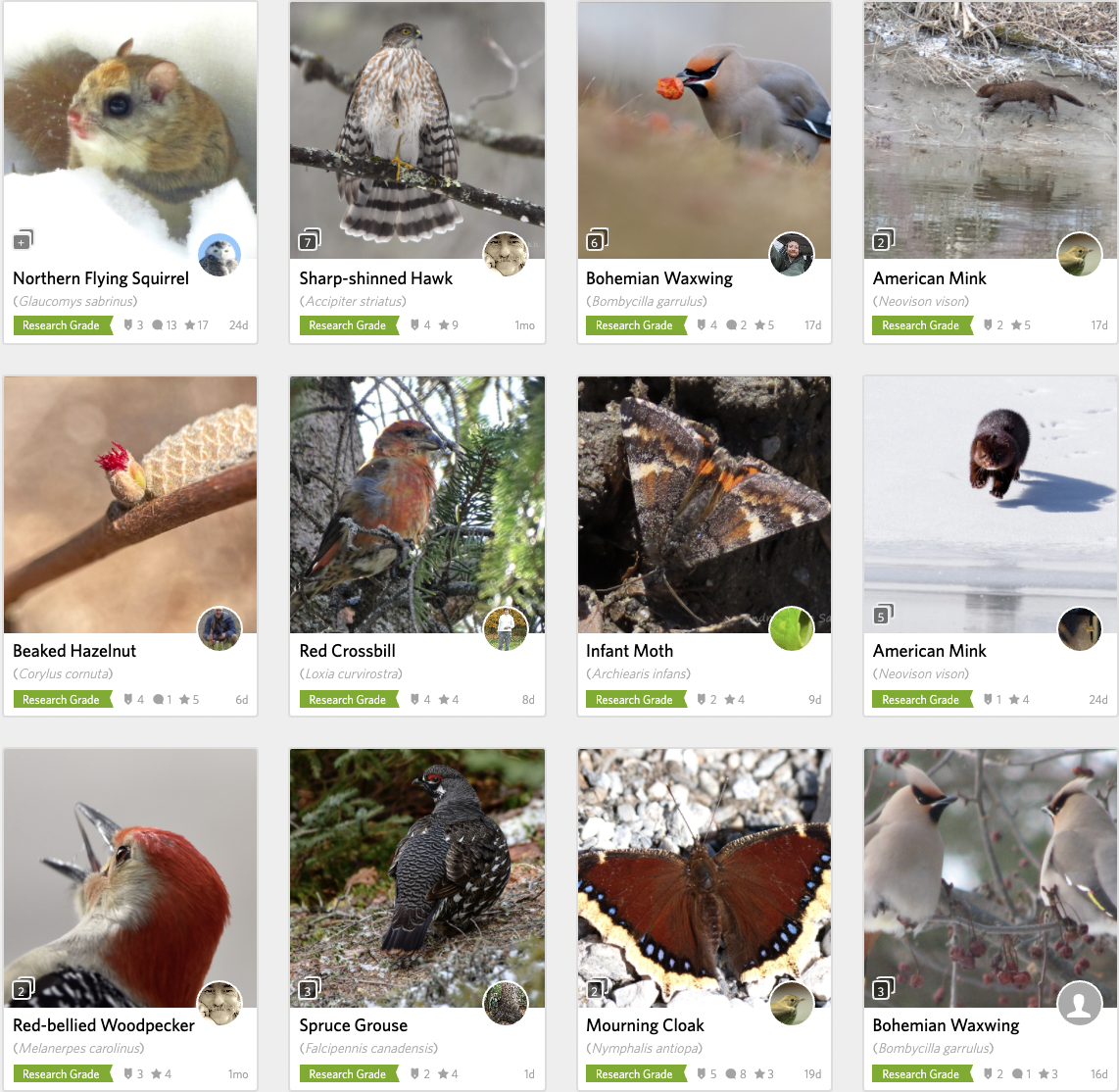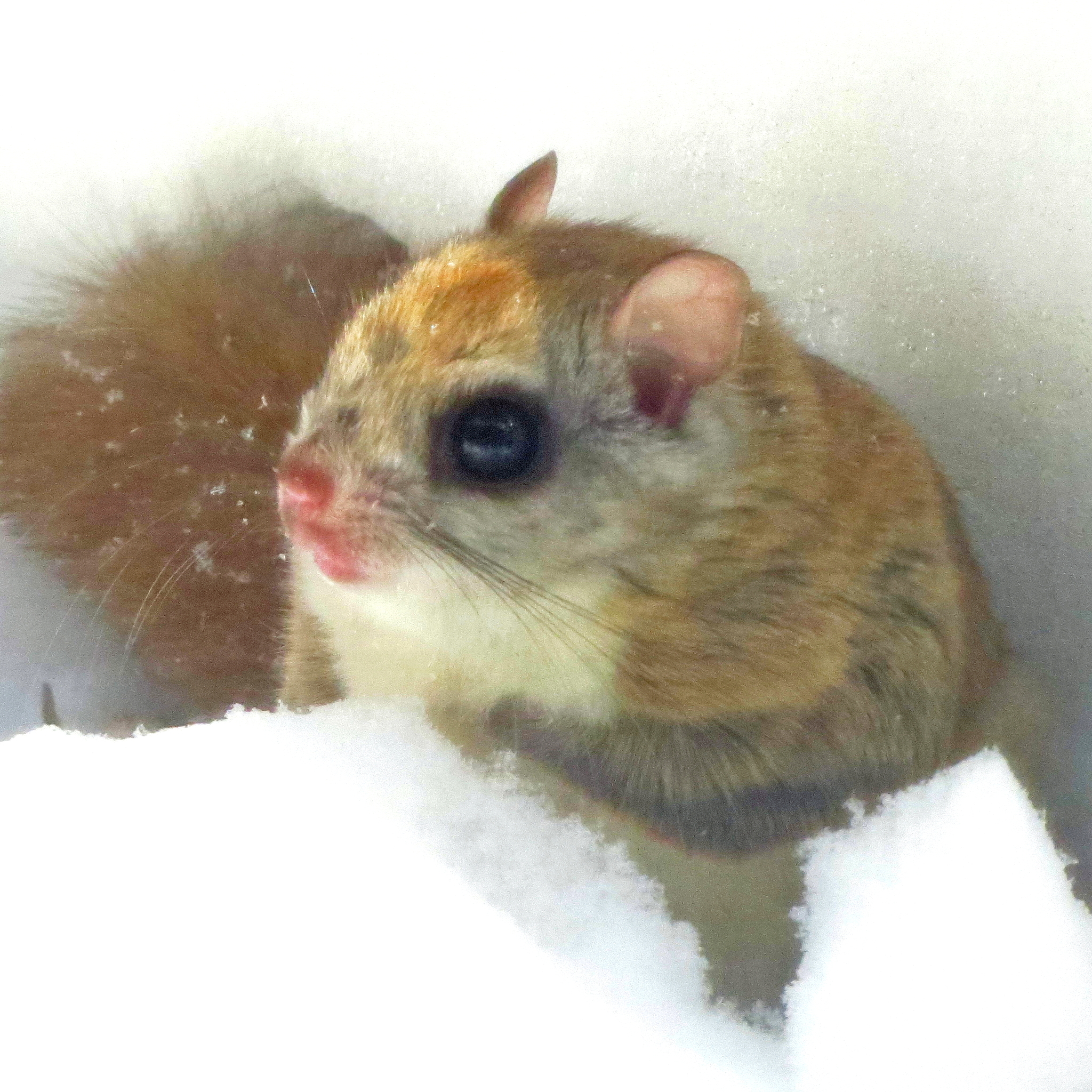Congratulations to Charlotte Bill for winning the March 2021 Photo-observation of the Month for the Vermont Atlas of Life on iNaturalist. Charlotte’s image of a Northern Flying Squirrel foraging for fallen bird seed at her backyard feeder garnered the most faves this month. Click the image above to see more of Charlotte’s photos of this encounter!
The Northern Flying Squirrel (Glaucomys sabrinus) is a primarily nocturnal species, and sightings of these adorable, big-eyed squirrels during the day are quite rare. Vermont is home to two very similar-looking flying squirrel species, the Northern and the Southern Flying Squirrel. Shortly after this observation was posted, mammal ID experts began to weigh in. They noted the reddish body fur (or pelage), particularly bushy tail, yellowish belly, and a dark stripe of fur on the side, all field marks identifying this as a Northern Flying Squirrel. This species is most likely to be found in mature woodlands, and is particularly sensitive to habitat fragmentation. While these squirrels can’t technically “fly”, the flaps of skin that stretch between their limbs allow them to glide distances of 50 feet or more. March marks the beginning of the mating season of Northern Flying Squirrels, so in all likelihood this particular squirrel is fueling up on seed to begin looking for a mate and starting the next generation of Northern Flying Squirrels. If you’d like to learn more about these fascinating, rarely seen mammals, check out Julia Pupko’s article, Flighty Furballs, in the Field Guide to March.

With nearly 4,000 observations submitted by 493 observers in March, it was very competitive. Click on the image above to see and explore all of the amazing observations.
Visit the Vermont Atlas of Life on iNaturalist where you can vote for the winner this month by clicking the ‘fave’ star on your favorite photo-observation. Make sure you get outdoors and record the biodiversity around you, then submit your discoveries and you could be a winner!


Wondering About a pond
In Manchester vt.with hundreds
Of lifeless red eft type newts
The dreaded fungus?
Or just their life cycle?
The pond has had trout
Added seasonally..no known
Pesticides or herbicides nearby